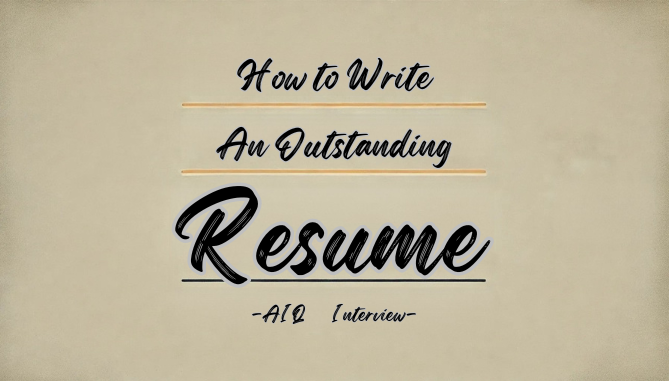In the fiercely competitive job market, a well-crafted resume is the key to job success. This article will delve into all aspects of resume writing, helping you create a resume that can catch the eye of potential employers.
Understanding the Target Position: Position Your Resume
Before you start writing your resume, conduct a job analysis. Understand the keywords and phrases in the job description, which are often the specific skills or experiences employers seek. For example, if the job description repeatedly mentions “teamwork,” it would be wise to highlight this in your resume.
Choosing the Right Resume Format: Show Your Strengths
Choose a resume format that best showcases your strengths. A reverse chronological resume might be the most suitable if you have a consistent work history. A functional resume might be more appropriate if you prefer to showcase skills rather than experience.
- Reverse Chronological Resume: Highlights your career progression and promotions.
- Functional Resume: Suitable for career changers or job seekers with special skills.
Writing a Powerful Introduction: Personal Brand Statement
The beginning of your resume should clearly convey your professional brand. This can be a brief summary or objective statement that summarizes your field of expertise and career goals.
- “Experienced full-stack developer, focused on building scalable web applications, seeking to push the boundaries of technology in an innovative tech company.”
Highlighting Your Skills and Achievements: Quantify Your Contributions
Use quantified results to showcase your skills and achievements, which can attract attention more than simple job descriptions. Ensure you use specific numbers and outcomes to support your statements.
- “Led a development team, successfully delivered 5 projects on time, with a total value of $2 million, and increased customer satisfaction by 40%.”
Education and Certifications: Show Your Qualifications
Clearly list your educational background, including degree, major, and the institution you graduated from. If you have relevant professional certifications or training, these should also be included, especially if they are related to your job target.
Personal Projects and Volunteer Experience: Show Your Versatility
Personal projects and volunteer work can demonstrate your initiative, leadership, and teamwork. These experiences can prove that you excel not only in professional environments.
- “Organized and executed a community clean-up event, mobilized over 100 volunteers, and successfully cleaned up over 1 ton of garbage.”
Keep It Concise and Professional: Refine Your Language
Your resume should be concise and clear, avoiding lengthy and unnecessary details. Use professional terminology and industry-specific language to ensure that your resume is easily understood by the target audience.
Review and Edit: Strive for Excellence
Before submitting your resume, thoroughly proofread to avoid spelling and grammar mistakes. Consider using professional resume review tools or asking others to review it for you.
Use Keywords: ATS Compatibility
Many companies use Applicant Tracking Systems (ATS) to screen resumes. Ensure that your resume includes the keywords from the job description to increase the chances of passing the ATS screening.
- Job Description Keywords: “Project Management,” Resume Reflection: “Successfully managed and delivered multiple cross-departmental projects on time.”
Adapt to Different Application Methods: Flexibility
Depending on the application method, you may need to adjust the format of your resume. For example, some online applications may require specific file formats or fields, while email applications may require a more concise format.
Conclusion: Continuous Improvement
Remember, your resume is a reflection of your personal brand and needs to be updated continuously as your career evolves. Constantly review and optimize your resume to ensure it always represents your abilities and achievements in the best light.
